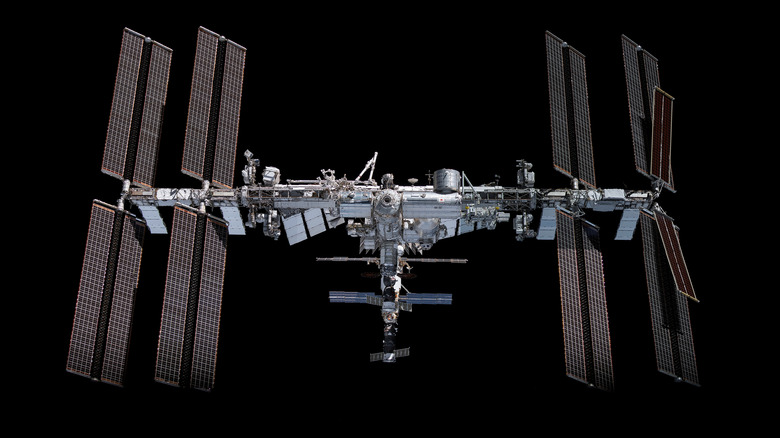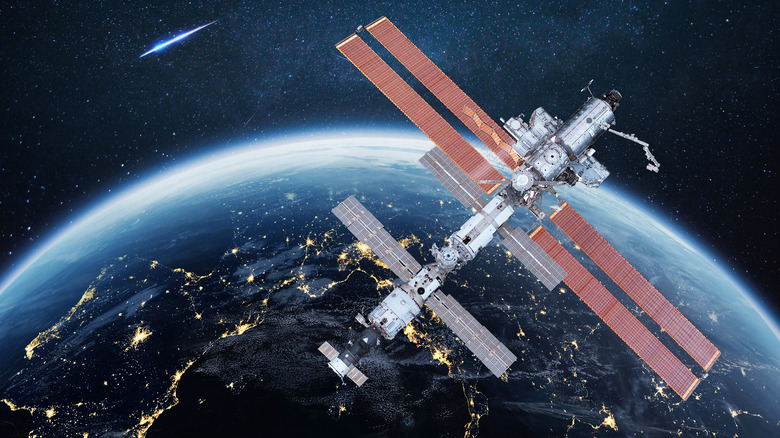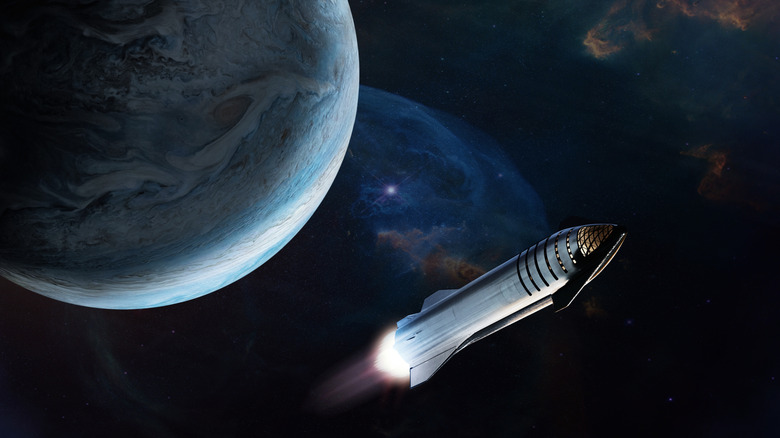Here's How NASA Plans To Deorbit The ISS
After more than two decades in orbit, the NASA is planning to end the International Space Station's journey. NASA has confirmed that the ISS will be decommissioned and deliberately brought down to Earth in 2030. The orbital laboratory, which has circled Earth more than 100,000 times, cannot simply remain aloft forever. Its structure is aging, maintenance costs are rising, and its orbit will eventually decay. Instead of letting it drift uncontrollably back through the atmosphere, NASA plans a controlled deorbit to ensure a safe and precise final descent of the station.
The ISS has been a symbol of scientific progress and international collaboration since its first module was launched in 1998. Some of today's adults hadn't even been born when the first scientists and astronauts boarded the station in November 2000. The ISS has become humanity's permanent home in space and a laboratory where astronauts from around the world conduct groundbreaking research on a wide range of topics, including medicine, physics, climate science, and spacecraft technology. But, as NASA looks towards the moon, Mars, and beyond, the time has come to say goodbye to this remarkable outpost and make way for a new generation of orbiting destinations.
How NASA plans to deorbit the ISS
When the International Space Station reaches the end of its mission life around 2030, NASA won't simply let it fall to Earth. That brings a potential risk of debris from the ISS hitting populated areas. Instead, the agency devised a multistep plan to guide the massive structure safely back into Earth's atmosphere. The ISS will gradually descend as natural atmospheric drag slowly lowers its orbit. Engineers on the ground will monitor and control this process, performing reboosts and orbital adjustments to ensure the station maintains stability and the correct orientation for the final maneuver.
Once the last crew has returned to Earth, a specifically designed spacecraft known as the U.S. Deorbit Vehicle (USDV) will approach the ISS. This vehicle, being developed by SpaceX under NASA's direction, will act as a space tug, likely aiming the ISS toward a remote region of the South Pacific Ocean known as Point Nemo, or the "spacecraft cemetery". It's where satellites and space debris have been safely deposited over the years.
As the USDV executes its deorbit burn, the station will begin to plunge into the denser layers of Earth's atmosphere, and heating will cause most of the structure to break apart and burn up, with any surviving fragments expected to fall harmlessly into the ocean. This controlled descent is vastly different from the uncontrolled reentries of smaller spacecraft such as Skylab, whose pieces ended up falling in Australia. Given the ISS's enormous size and weight of over 400 tons, an uncontrolled descent would pose an unacceptable risk.
The ISS's decommissioning will be the most complex reentry ever attempted, requiring meticulous coordination between international partners, NASA, Russian Roscosmos, European Space Agency, Japan Aerospace Exploration Agency, and the Canadian Space Agency. NASA's controlled approach ensures not only safety but also a dignified end for one of humanity's most ambitious symbols of science and cooperation.
Why is NASA decommissioning the ISS, and what's next?
There are several overlapping reasons behind the decommission of the ISS. Most importantly, the station is aging. Its modules, radiators, trusses, and other structural elements have endured decades of harsh conditions in orbit: cyclical heating and cooling, docking loads, orbital reboosts, continual wear, and even a meteor impact that pressed Russia into rescuing a stranded ISS crew. Continuing to maintain and operate the station becomes increasingly costly and risky. But then comes the question: How will NASA replace the ISS after it deorbits?
Well, a new era in low Earth orbit is already beginning to take shape. NASA's future role won't be to own or operate the next orbital outpost, but to partner with private companies that will. Several U.S. companies are racing to develop new commercial space stations: Axiom Space, Blue Origin's Orbital Reef, and Voyager Space's Starlab, to name a few. These platforms will serve as research hubs, manufacturing sites, and even destinations for private astronauts. Rather than maintaining an aging government-run laboratory, NASA plans to purchase time aboard these commercial stations.
In short, the ISS's retirement opens the door to innovation. The shift means potentially lower costs and new opportunities for research, industry, and space tourism. But beyond low Earth orbit, NASA's ambition stretches much further. The agency's Artemis program aims to return humans to the moon and establish a sustainable presence there. This moon base will ideally serve as a testing ground for technologies and operations needed for the first crewed mission to Mars. Still, the lessons learned on the ISS, such as life support, long-duration missions, and international collaboration, will be crucial in achieving these deep-space goals. In that sense, the ISS's legacy won't end with its descent into the Pacific. It will live on in every future spacecraft that carries humanity further into the cosmos.


